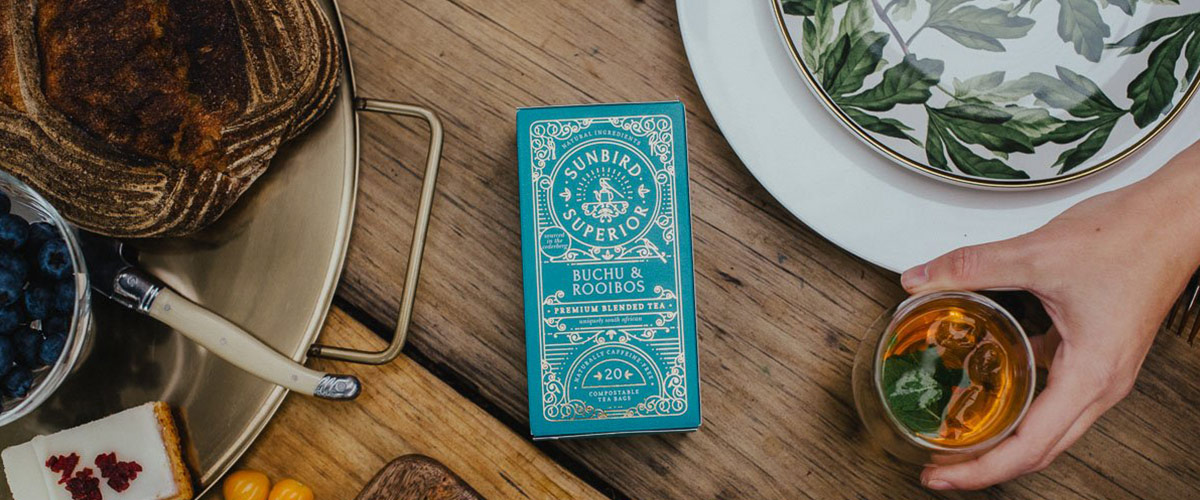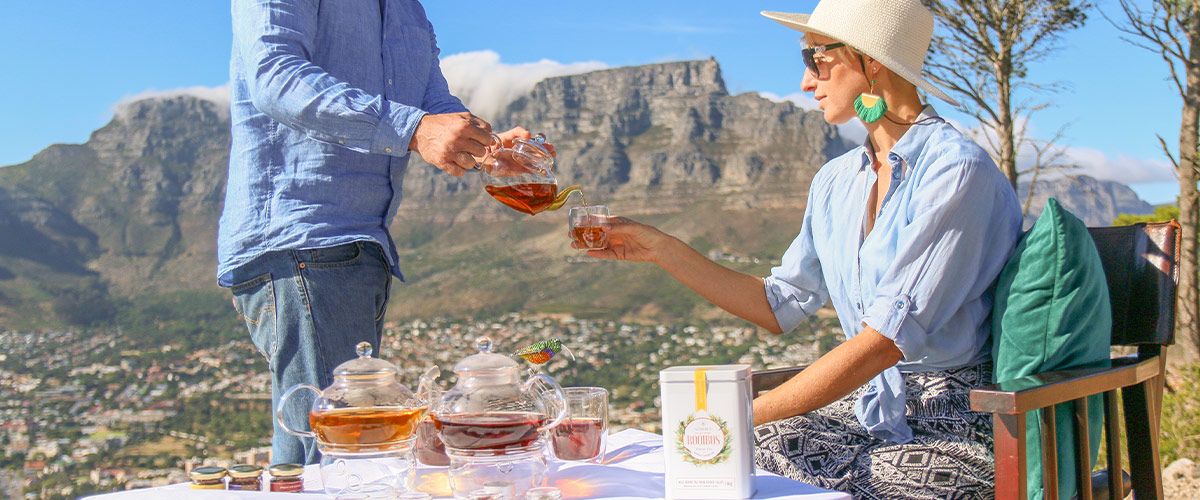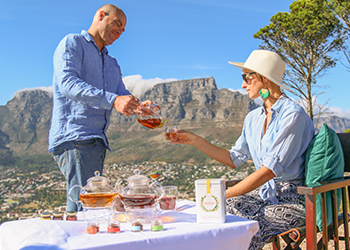
Guest Explorer: Anton Louw – Founder of Sunbird Tea
Anton used to work as a winemaker, before studying environmental science and then spending a year in Nepal. There, he discovered what good quality tea is and how similar it is to wine – both in how the flavours develop and then how they are appreciated. It also gave him a new found appreciation for an old staple – Rooibos Teas. Upon returning home, he adopted the colourful and boisterous sunbird as his mascot for his quality tea brand. These iconic nectar-drinking birds are at home in the mountains where Rooibos naturally grows – making them the ideal symbol for his organic teas.

What is rooibos tea and what is its history in South Africa?
Rooibos (Aspalathus linearis) is indigenous to the Cederberg Mountains of South Africa – about 3 hours north of Cape Town. Despite efforts, rooibos still only grows in its homeland, South Africa. This localisation makes it unique – it is enjoyed globally but only grows locally. The history of rooibos goes back thousands, and perhaps tens of thousands of years. The San people, South Africa’s first-nation people, used it as a medicinal herb. It’s also possible that our pre-human ancestors drank Rooibos.
It’s a historical curiosity that rooibos’ modern history is linked to the Chinese tea trade – when the Cape became a stop-over for European traders to the East. When tea drinking became fashionable in Europe, the settlers sought to imitate the trend and so adopted the local brew. It was only at the beginning of the 20th century that commercial experiments began with the plant. When tea became scarce in South Africa during the Second World War, locals realised that they had a better alternative and it became a staple in all kitchens across the diverse cultures of South Africa.
What are the different types of rooibos and how do they vary in flavour?
Because of how the industry developed, rooibos has until now only been seen as a staple or healthy alternative to regular tea and not so much a discerning drink in its own right. It is a great base for blending and as a result many brands add all sorts of herbs, fruits, flowers and spices to it. To be fair, real tea has a 5000-year agricultural history with ample time to refine techniques. Field-grown rooibos has been around less than 1/50th of this time!
There is still wild rooibos growing in mountains of the Cape, however, has more earthy or spicier flavours than the domesticated variety. In the mid-90s, a green rooibos method was developed where the tea was unfermented – this keeps its powerful anti-oxidants as well as a crisp apple and cut grass flavour when correctly brewed. A wonderful and also incredibly healthy drink. Shortcut rooibos in bags is the most popular, and while it is certainly a much better drink than your standard ‘real’ tea bag, it doesn’t impart as much flavour or have as many nuances as the loose-leaf tea. Long-cut rooibos is only available as loose-leaf and this imparts a more delicate floral flavour.
Can you find rooibos tea anywhere else in the world?
Rooibos has become much more popular internationally and while it might not be in every supermarket, you should certainly be able to find it in most major cities if you know where to look. Although South Africans know it as a staple, it is seen as an exotic curiosity in most of the rest of the world.

What are the known medicinal benefits of rooibos and do the benefits and/or quality of the tea vary based on how it’s cultivated and produced?
The research is new but based on ancient wisdom. The medicinal properties of rooibos were part of the herb lore of the San people and had a myriad of applications. According to the strictures of health research, there is still little that can be definitively stated, but there is very promising research into relieving cancer, hypertension, diabetes, skin ailments, and digestive problems to mention a few. For wine lovers, it also boosts liver functioning and so is a good hangover cure!
What we can also be fairly sure about is that a lot of the cheaper tea is being grown on lands that have tired and depleted soils, so there will be lower concentrations of the micro-nutrients and compounds that bring these health benefits.
Still, even if you assume that rooibos has no medicinal benefits, almost everything else that you drink has sugar, fat, caffeine or alcohol in it. The fact that a cup of black unsweetened rooibos has none of these means that it is already much healthier for you. By swapping out one cup of soda, coffee, or booze for a rooibos alternative you are already doing your body a big favour.
How does terroir make a difference in tea?
We are the first to look into the terroir differences of the rooibos and launch a range based on this. As we are still relatively new – with our first harvest in 2017, we are still in very much a learning phase as to how the terroir affects flavour. The differences are there, to be sure, but what causes these will take time. After all, the French wine approach to terroir is the outcome of centuries of trial-and-error practice. Still, we are already noticing that the hotter and drier areas appear to accentuate the flavours and make them more robust, while cooler areas are producing softer, more delicate flavours.
Can you get high-quality rooibos tea like Sunbird outside of South Africa?
Yes, but you would have to know where to look. Unfortunately, 95% of the rooibos tea exported goes in bulk. A fraction of this will be quality, but the majority will be a blend of high and low quality to yield a middle of the road, but a consistent product. Most high-end tea brands will offer a rooibos, but it’s mostly just to complete their range or offer something interesting onto which they blend. At Sunbird, we look to create the quality product here in South Africa, creating the value close to the source and so provide work and opportunities in our home country.
